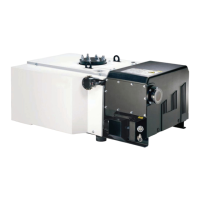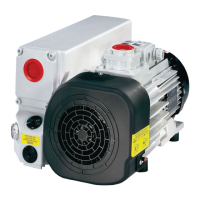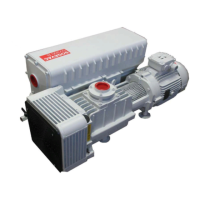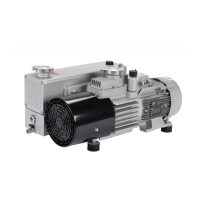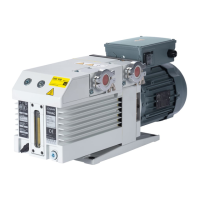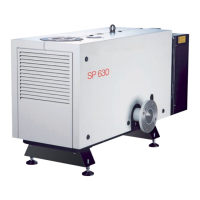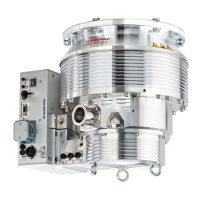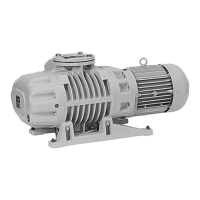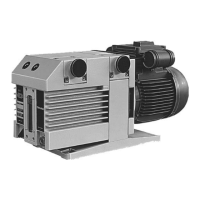130001815_002_C0 SV 40 B – 65 B – 100 B – 120 B ATEX Cat 2 11/2016 28 / 74
3 Installation
It is essential to observe the following instructions step by step to ensure safe
start-up. Start-up may only be conducted by trained ATEX specialists.
Before installing the pump you must reliably disconnect it from the electrical
power supply and prevent the pump form running up inadvertently.
Observe all safety regulations. The pump is only ATEX if it is controlled by a
suitable control system, if all sensors and switches are connected &
integrated into the controls algorithms.
Furthermore, we recommend that a pilot valve is installed on the pump inlet to
allow a pump warming before the process start & oil degassing after the
process. The valve is not part of the pump scope of delivery. Please note that
the gas temperature must be measured.
Do not stand on the pump and do not place objects on the pump as these can
cause deformation of the fan housing and possible frictional rubbing.
The SOGEVAC
®
can be set up on any flat, horizontal surface. Under the four
feet, there are metric threaded holes (M8 or M10, see § 1.3 Connection) for
securing the pump.
The oil level cannot be read properly if the pump is tilted and lubrication may
be affected. The max. slope angle is ± 1°.
The pump’s ambient temperature must be between 12°C (55°F) and 40°C
(104°F).
To ensure adequate cooling of the pump, leave enough space at the air
intake and exhaust points, and for access and maintenance (see Fig. 1.1 to
1.4). Make sure to keep the fans, hoods, cooling coils & air intake of the motor
clean.
The pump is to be installed such that the oil level sight-glass can be both
easily read and so that it will not be broken.
3.2 Connection to the system
Pump should be connected to inlet line without any tension. Use flex lines
or pipe unions in your inlet and exhaust lines so that they can be easily
removed for pump maintenance.
The maximum pressure at the inlet may not exceed atmospheric pressure
(about 1013 mbar). Never operate the pump in the presence of over
pressures at its intake.
Type of materials used for mounting of pipings should take care of pumped
gases & ATEX regulations. It is the same for its tightness. Using suitable
connecting elements (see § 1.4) the pump can be connected to the vacuum
system.
The cross-section of the intake line should be at least the same as the one for
the intake port. If the intake line is too narrow, it reduces the pumping speed.
If the process gas contains dust, it is absolutely essential to install a dust filter
in addition to the dirt trap supplied (see §1.4).
We recommend installing the dust filter horizontally. This ensures that when
removing the filter no particles fall into the intake port.
When pumping vapours, we recommend installing condensate traps on the
intake and exhaust sides.
The intake must be installed in such a way to avoid condensates flowing into
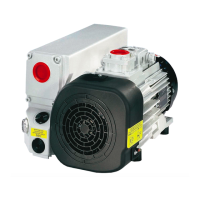
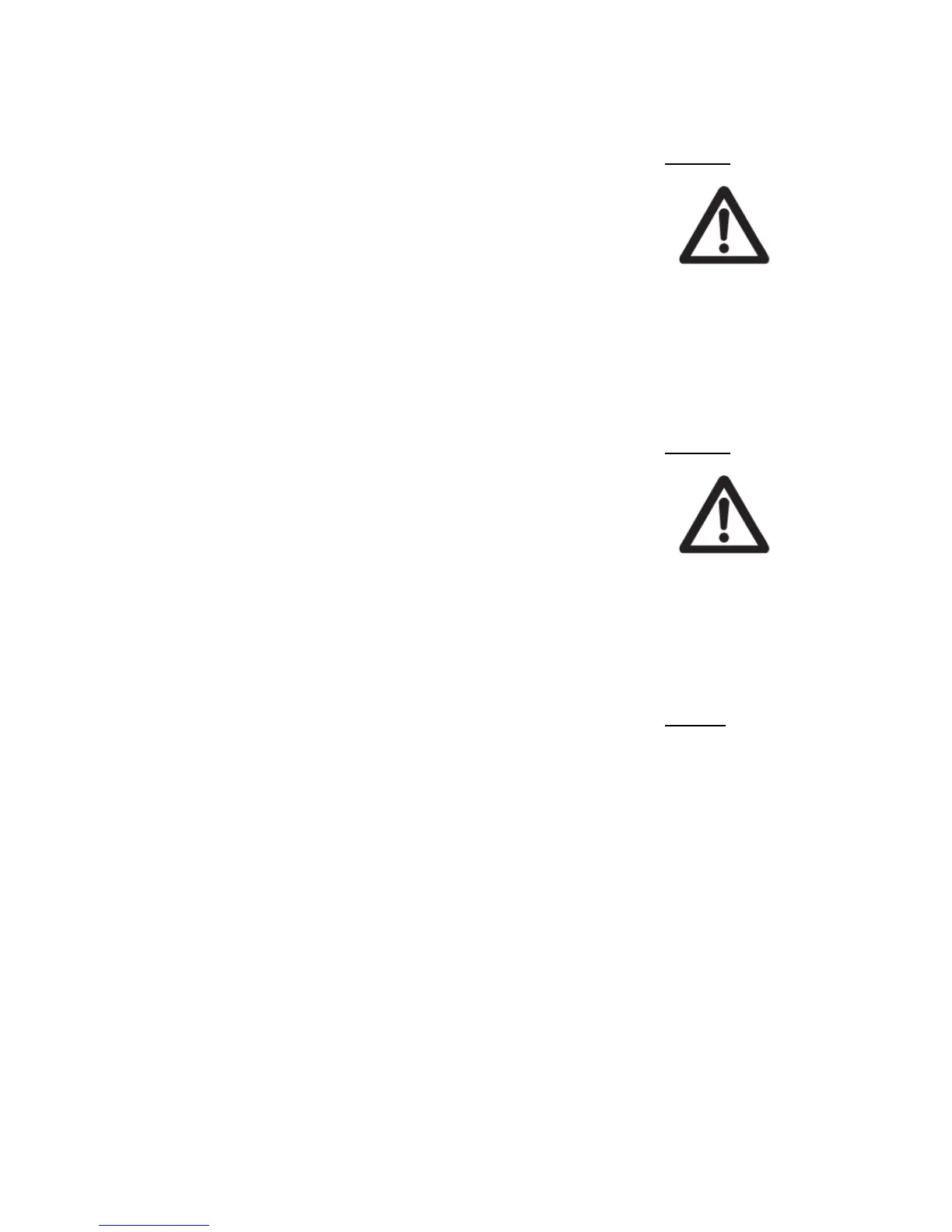